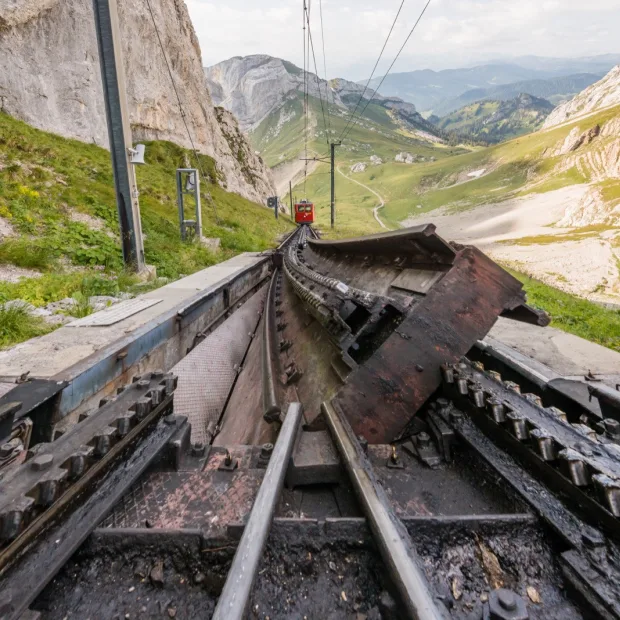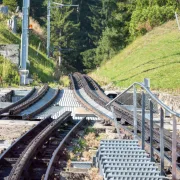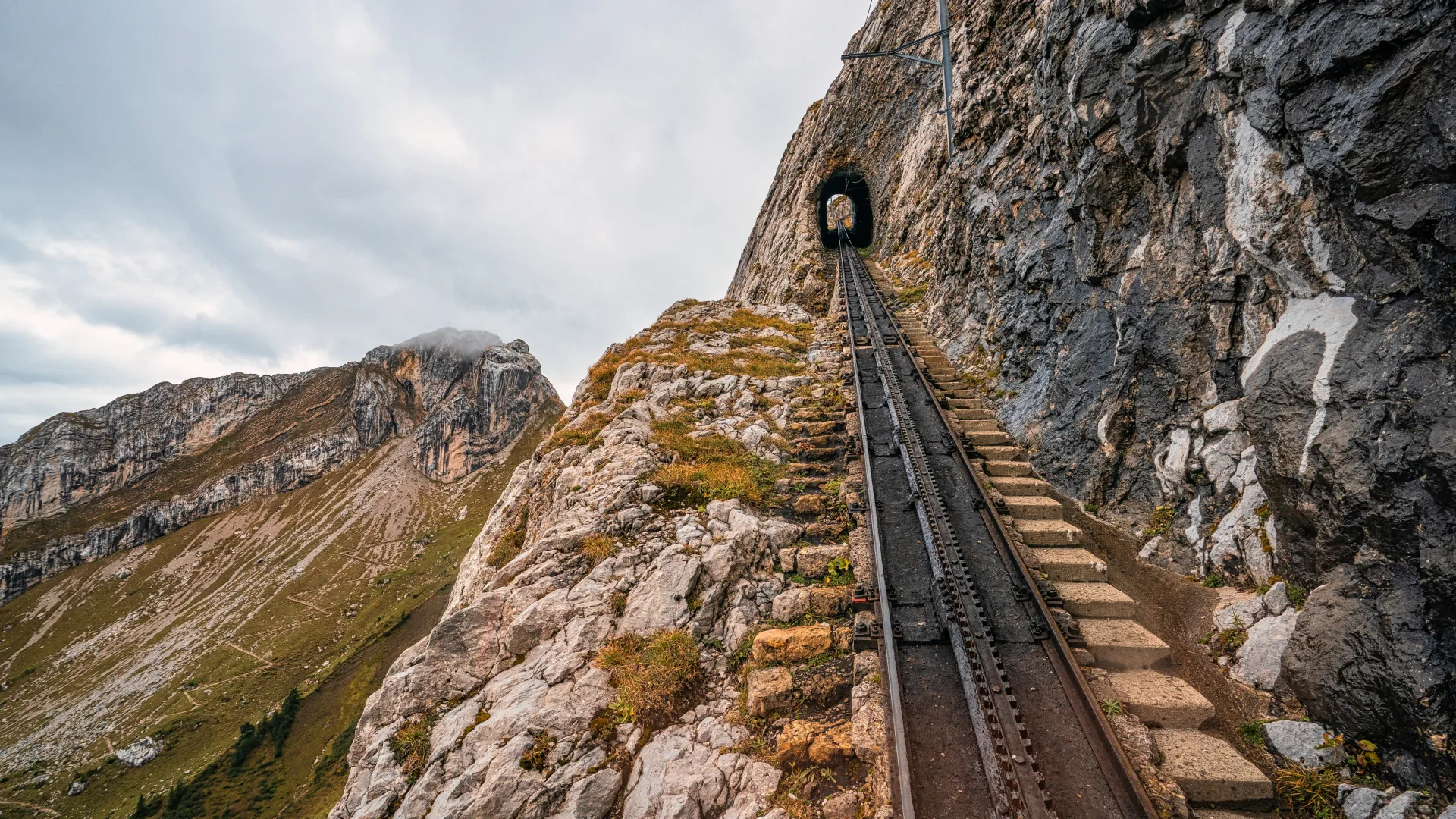
The steepest cogwheel railway in the world
Commissioned in 1889, with a gradient of up to 48 per cent and a journey time of around 30 minutes, this is the steepest cogwheel railway in the world in figures. It climbs metre by metre from Alpnachstad to Pilatus Kulm, past blooming alpine meadows and striking rock formations.
Technical data
Route
Alpnachstad - Pilatus Kulm
Opened
4 June 1889 (steam operation)
15 May 1937 (reopening after electrification)
5 June 2023 (reopening with new rolling stock)
Operating time
May to November
Difference in altitude
1635 m
Length of the railway line
4618 m
Maximum travelling speed
Uphill: 15 km/h
Downhill: 9 km/h (on gradients >39%); 12 km/h (on gradients <39%)
Journey time
uphill 27 min., downhill 33 min.
Capacity
8 railcars for 46 passengers each
Traction unit weight
13.1 tonnes (empty weight)
16.7 tonnes (total weight)
Railway system
Locher cogwheel railway system
Drive power
358 kW per railcar
Track
Track width: 0.8 m / gradient: maximum 48%, average 38%
Catenary voltage
1500 Volt DC
Manufacturing company
General contractor Locher Link opens in a new tab.
Wagon (new): Stadler Bussnang AG
Carriages (old): SLM Schweizerische Lokomotiv- & Maschinenfabrik, Winterthur
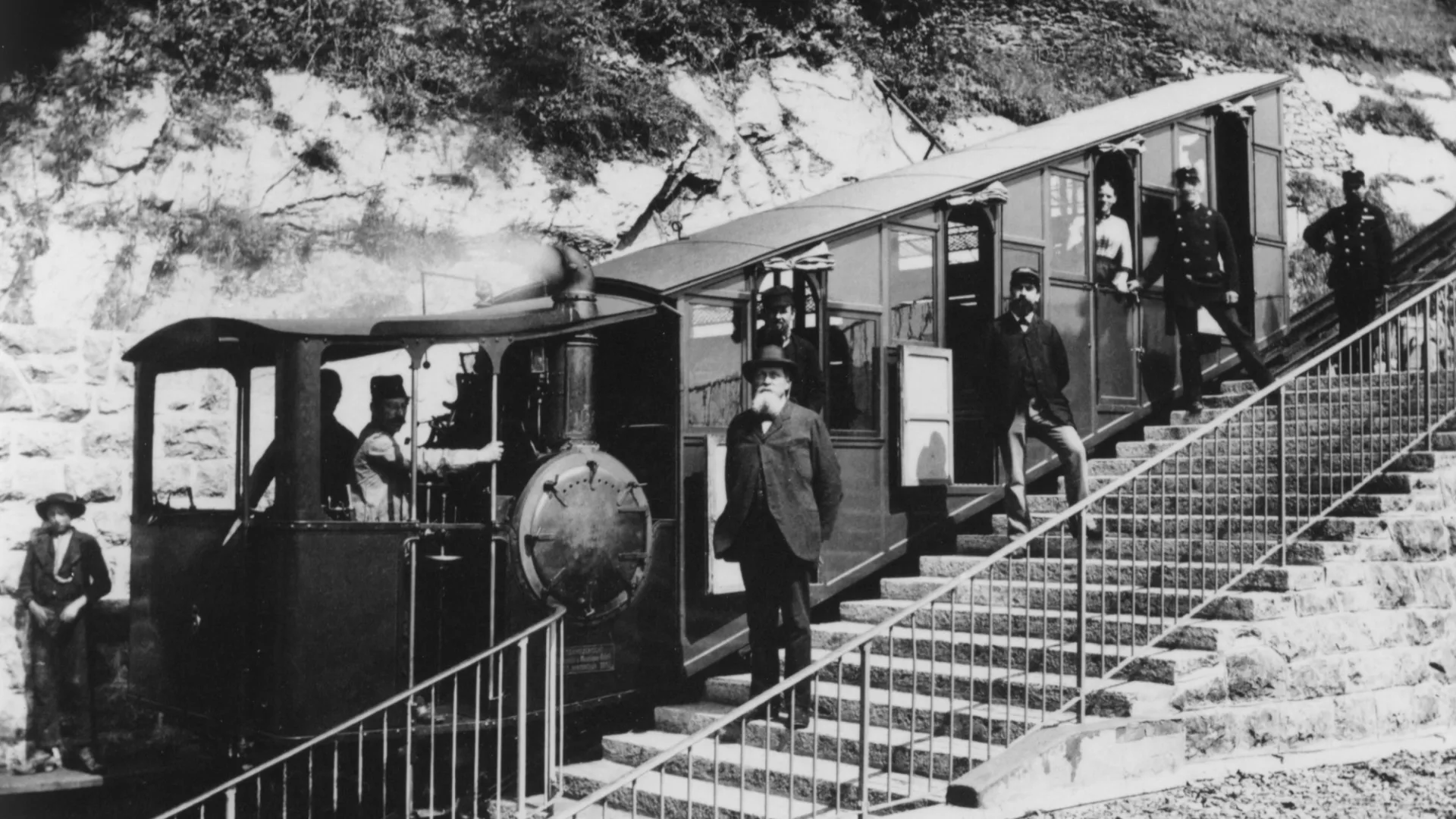
Pioneering spirit with vision
When Eduard Locher had the vision of building a railway up Mount Pilatus in the 19th century, he was met with a great deal of scepticism. But in 1889, his idea became reality - with the steepest cogwheel railway in the world. An ingenious technique with horizontally rotating cogwheels made the seemingly impossible possible.
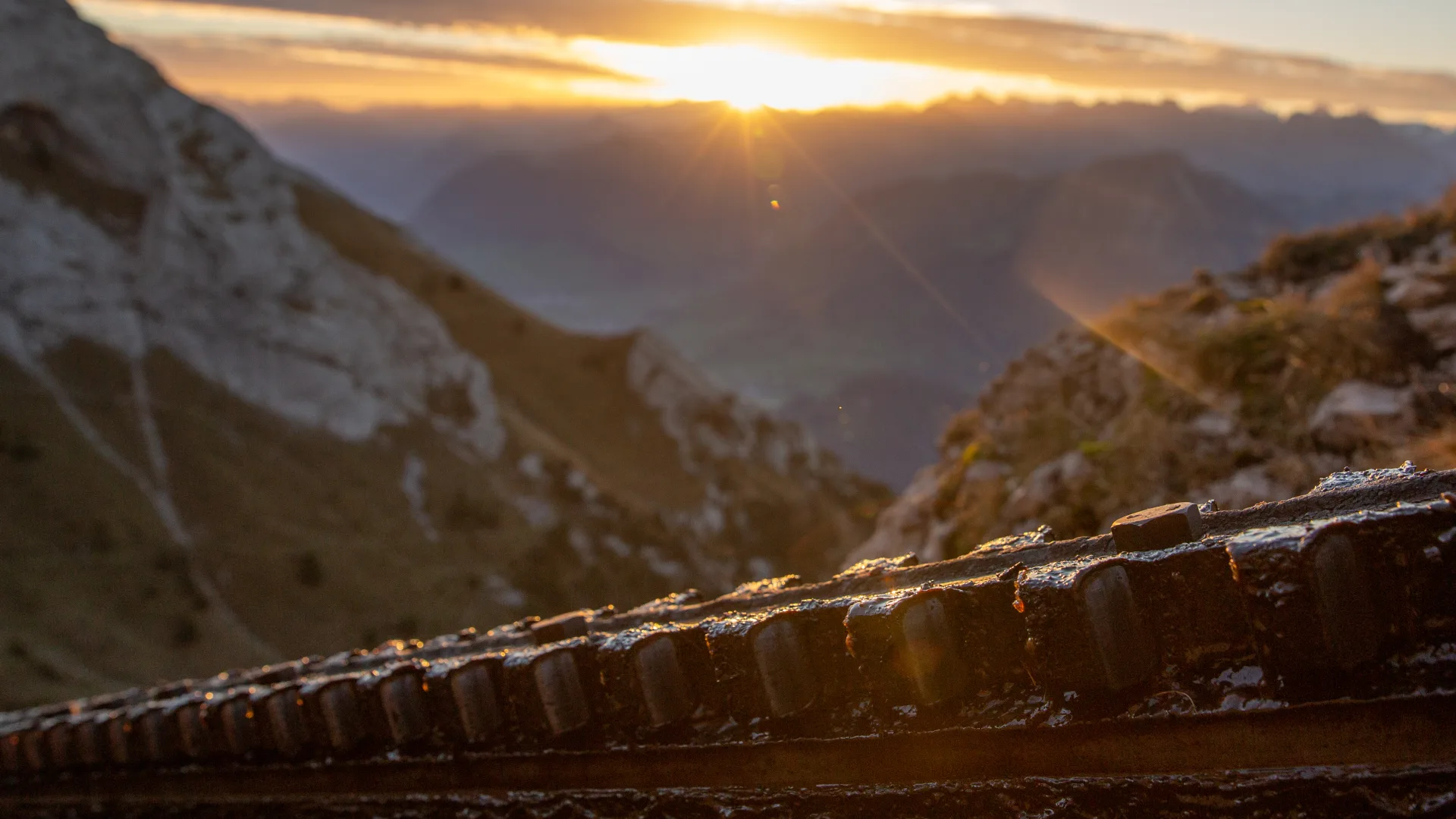
Unique technology
With a gradient of 48%, the Pilatus Railway has been mastering one of the boldest railway lines in the world for over 100 years. To overcome the challenge, the builders developed their own cogwheel system - a technical masterpiece that made history.
48% gradient - the special cogwheel system
For well over a hundred years, the Pilatus Railway's railcars have been climbing to the summit of the imposing Pilatus on the world's boldest cogwheel railway line. With a maximum gradient of 48%, it is the steepest cogwheel railway in the world and unique of its kind. This extraordinary steepness was accompanied by the risk that the cogwheel railway systems known at the time would cause the railcar teeth to rise. The builders therefore had to create a special cogwheel system with a special rack. The so-called "Locher system" engages on both sides in a rack arranged in the centre and thus enables a safe journey.
By 1937, there were eleven steam railcars, with which the 4618 metre-long route to Pilatus Kulm could be completed in a journey time of 70 to 80 minutes.
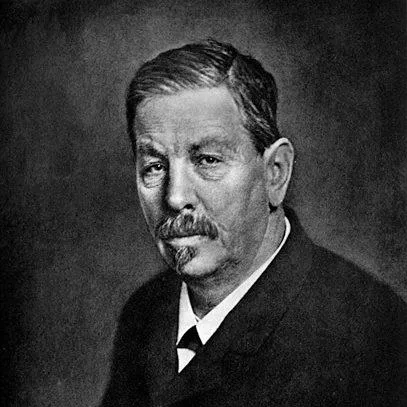
From steam operation to electric railway operation
As early as 1905, there were plans to switch from steam to electric railway operation. However, this electrification project had to be postponed due to the high costs at the time. From 1931, those responsible at the then Pilatus Railway Company again considered electrifying the railway due to the heavy wear and tear on the existing vehicles. On 15 May 1937, electric rail operations with the new railcars were officially inaugurated. Two of the former steam railcars are still in existence. They can be viewed in Switzerland and Germany: at the Swiss Museum of Transport Link opens in a new tab. in Lucerne and the German Museum Link opens in a new tab. in Munich.
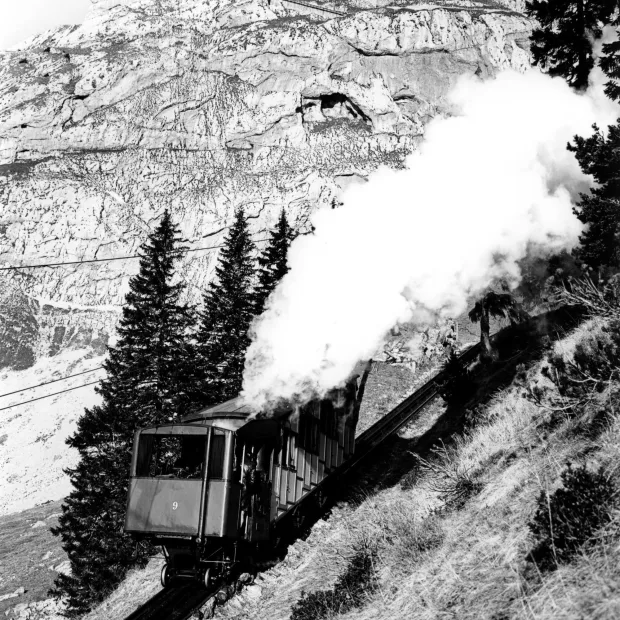
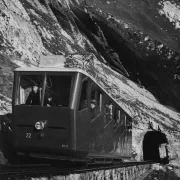
The beginning of a new era
After the 125th anniversary of the world's steepest cogwheel railway, the time had come to transfer the historical legacy into a new era and thus prepare it for the coming decades. With the redesign of the cogwheel railway, around 55 million Swiss Francs were invested in eight new passenger railcars, a new freight railcar and other optimisations. The primary aim of the investment project was to preserve the unique cultural asset that Eduard Locher and his team created over 130 years ago. Thanks to the pioneering rack and pinion system, the cogwheel railway has managed a record gradient of 48% since 1889 - a feat that remains unrivalled worldwide to this day. After all these years, the system shows hardly any signs of wear and remains practically unchanged.
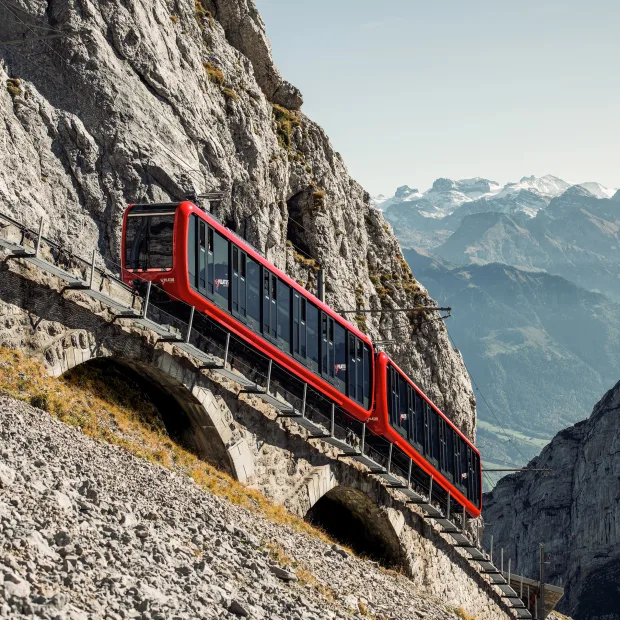
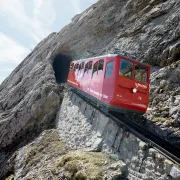
In addition to the centrepiece of the renovation, the new passenger and freight railcars, three new, custom-made track turnouts were installed in Alpnachstad and a second platform was built. The Ämsigen middle station and the Pilatus Kulm mountain station were also optimised. All of these construction measures enable the world's steepest cogwheel railway to operate more efficiently.
On 5 June 2023, the time had come: the cogwheel railway started the new season for the first time with a completely new fleet.
